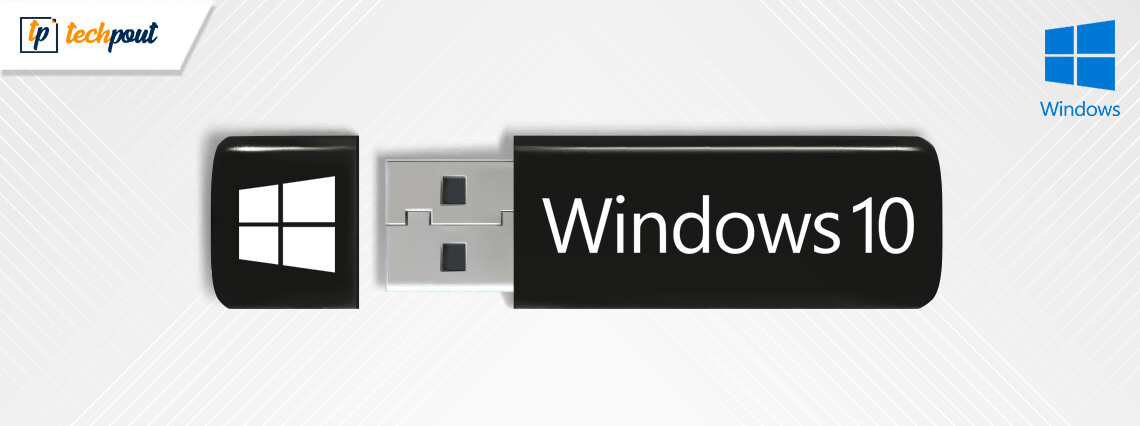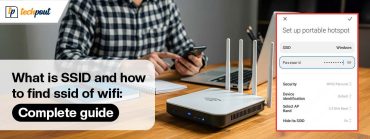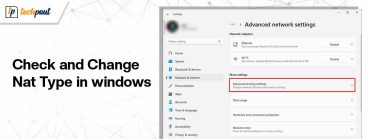How To Install Windows 10 From USB Drive (2021 Guide)

Are you struggling to install New Windows version on your PC? Well, you can quickly boot Window 10/7 using a USB drive.
With a blink of an eye, you can install the latest version of Windows on your computer system. Here’s everything you should know about Windows 10 bootable USB tool.
Why Update Your Windows Version Using a USB Drive
If you are falling short of DVDs and your PC does not have a free optical drive, then USB drive serves the option for booting your system.
This portable device is compatible with almost all desktop gadgets and laptops. Using a mobile device like USB offer a much simpler and straightforward way to boot your device.
Minimum 8GB of storage is required for this also the USB drive should be well formatted before booting the system.
Read More: How To Update Device Drivers on Windows 10
What You Need Before Installing Windows 10 From USB
Well, this post will guide you on how to Install Windows 10 from USB, but before jumping towards the step. Here are the things that you need before installing Windows 10 from USB. Have a quick look at them!
- DVD or Windows 10 install .iso file.
- USB flash drive which has at least 8 GB free space.
- A PC where you can format the USB Flash Drive.
- A PC on which you’ll install the new Windows.
So, these are all that you need before installing Windows 10 from USB. After this, follow the following steps!
Step 1:- To format the drive you have to connect the USB flash drive to the other PC that you have. And, later on, make sure to set the partition as Active.
Step 2:- Then, copy and paste the Windows setup file to the formatted USB Flash Drive. And, for doing so, you can use File Explorer.
Step 3:- Now, install the Windows to the new system via connecting a USB flash drive to a new system. After following the directions to install Windows on a new PC, do not forget to pull back the USB flash drive.
This is how you can install Windows 10 from USB drive with much ease.
Ensure That Your Device is UEFI Boot Support
Before we move ahead, let’s first understand the difference between UEFI and BIOS. BIOS stands for basic input/output system and was majorly used to manage data between system devices and OS.
However, UEFI which stands for Unified Extensible Firmware Interface has wholly taken over BIOS in the last decade.
Fortunately, you can use either of the two mechanisms to boot your computer using a USB drive.
Read More: Best Uninstaller Software For Windows 10, 8, 7
How to Prepare Windows 10 Bootable USB Drive
Using Windows 10 bootable USB tools to install windows is the easiest and quickest way. To start with, connect a well-formatted USB drive to your system. There are various ways of installing Windows 10, but the most straightforward and fastest way is with the help of a windows 10 media creation tool download.
To use this, go to the Windows 10 Microsoft download page. And then hit the “Download tool now” button.
The next step is to create windows 10 installation media, follow the simple steps to get your job done. Ensure that you have a legitimate license to download Windows 10. Once confirmed, you can easily install and run the media creation tool on your system.
- Next step is to save this lightweight tool on your system.
- Open the Media creation tool.
- From the next prompted window, click on “Accept” to confirm.
- In the displayed window, you will be given 2 options, choose “Create installation media” (ISO file, USB flash drive, or DVD).
- Click on the “Next” button now.
- Now set Windows 10 edition, language, and system architecture.
- In case you are unable to change the settings, uncheck the box with says, “Use the recommended options for this system/PC”.
- Click on the “Next” button.
- From the displayed window, choose “USB Flash” followed by the “Next” button.
- From the list of drives, choose the relevant USB drive and hit “Next” to start the download process.
Downloading Windows 10 With a Portable USB Drive
Once you have successfully created the installation media, installing Windows 10 gets exceptionally easy. You can now use this bootable USB to update the targeted device.
Switch on the PC you wish to update and then connect the USB drive and wait for it to get detected. Once the USB drive is adequately detected, you can start the installation process.
You can also similarly install Windows 7.
Read More: Update Latest Canon Printer Drivers for Windows 10, 8, 7
How to Make a Bootable USB Drive
Follow the simple step-by-step guide to create a bootable USB drive.
- To start with, you need a minimum of 8GB USB drive.
- Next, install the Windows media creation tool.
- To download Windows 10 installation files, run the media creation wizard.
- Once the installation media is created, eject the USB flash drive.
- And there you have it, a well-formatted bootable USB drive.
Through the help of the above steps, you can easily create a bootable USB drive to install windows 10 from USB on a new PC.
Closing Words
From here, you’ll be familiar with how you can install Windows 10 from USB on a new PC. Through this write-up, we’ve explained to you how you can make a bootable USB drive. Along with this, we’ve also told you what you need before installing Windows 10 from a USB drive.
Hopefully, now you’ll get to know exactly what you need to do to install Windows 10 from a USB drive. Still, if you’ll face any sort of difficulty while doing so, then do let us know through the comment box below! We assure you to help you out. And, don’t forget to subscribe to our Newsletter to stay updated. Till then, Happy Installing!



Comment 1